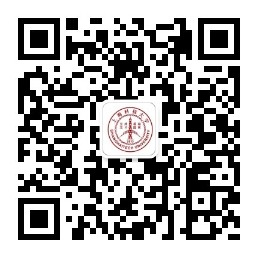X
+
-
重置

题目(Title):
New Frontiers in Elasto-Quantum Materials: Three-State Potts Nematicity and Excitonic Insulators
主讲人(Speaker):
Jiun-Haw Chu
开始时间(Start Time):
2025-06-09 10:00
结束时间(End Time):
2025-06-09 11:00
报告地点(Place):
物质学院5-103教室
主办单位(Organization):
物质科学与技术学院
协办单位(Co-organizer):
简介(Brief Introduction):
报告人简介:
Prof. Jiun-Haw Chu works in experimental condensed matter physics. His primary research goals are directed towards discovery and understanding of novel collective behaviors in quantum materials. Prof. Chu obtained his B.S. degree in Electronics Engineering from Chiao Tung University (Taiwan) in 2004, and his Ph.D. degree in Applied Physics from Stanford University in 2012. He did his postdoctoral works at University of California, Berkeley and Stanford University. In 2016 he joined the faculty of University of Washington, where he is now an Associate Professor of Physics. Prof. Chu received a Yong Investigator Award from the Air Force Office of Scientific Research and a Moore Fellowship in Material Synthesis in 2017, was named a Sloan Research Fellow and a Packard Fellow in Science and Engineering in 2018 and received a Presidential Early Career Award for Scientists and Engineers in 2019.
讲座摘要:
Electronic nematicity is a strongly correlated electronic phase that spontaneously breaks crystalline rotational symmetry. While the best-known example is Ising nematicity in iron-based superconductors—where fourfold rotational symmetry is reduced to twofold—recent efforts have explored nematicity in systems with crystal symmetries beyond the square lattice. In this talk, I will present two such cases: (1) three-state Potts nematicity in trigonal 1T-TiSe2, which breaks threefold rotational symmetry, and (2) the excitonic insulator in orthorhombic Ta2NiSe5, which breaks mirror symmetry. Using in situ tunable strain as a probe, we elucidate the symmetry-breaking nature of the charge order in 1T-TiSe2 and identify the driving mechanism behind the phase transition in Ta2NiSe5. These results highlight the rich interplay between electronic correlations and lattice symmetry in quantum materials.
邀请人:柳仲楷
Prof. Jiun-Haw Chu works in experimental condensed matter physics. His primary research goals are directed towards discovery and understanding of novel collective behaviors in quantum materials. Prof. Chu obtained his B.S. degree in Electronics Engineering from Chiao Tung University (Taiwan) in 2004, and his Ph.D. degree in Applied Physics from Stanford University in 2012. He did his postdoctoral works at University of California, Berkeley and Stanford University. In 2016 he joined the faculty of University of Washington, where he is now an Associate Professor of Physics. Prof. Chu received a Yong Investigator Award from the Air Force Office of Scientific Research and a Moore Fellowship in Material Synthesis in 2017, was named a Sloan Research Fellow and a Packard Fellow in Science and Engineering in 2018 and received a Presidential Early Career Award for Scientists and Engineers in 2019.
讲座摘要:
Electronic nematicity is a strongly correlated electronic phase that spontaneously breaks crystalline rotational symmetry. While the best-known example is Ising nematicity in iron-based superconductors—where fourfold rotational symmetry is reduced to twofold—recent efforts have explored nematicity in systems with crystal symmetries beyond the square lattice. In this talk, I will present two such cases: (1) three-state Potts nematicity in trigonal 1T-TiSe2, which breaks threefold rotational symmetry, and (2) the excitonic insulator in orthorhombic Ta2NiSe5, which breaks mirror symmetry. Using in situ tunable strain as a probe, we elucidate the symmetry-breaking nature of the charge order in 1T-TiSe2 and identify the driving mechanism behind the phase transition in Ta2NiSe5. These results highlight the rich interplay between electronic correlations and lattice symmetry in quantum materials.
邀请人:柳仲楷



 沪公网安备 31011502006855号
沪公网安备 31011502006855号